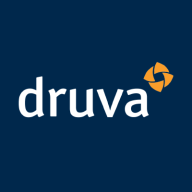

Microsoft Defender for Cloud and Druva Data Security Cloud are competitors in cyber security and data protection. Defender for Cloud offers comprehensive threat detection, while Druva Data Security Cloud shines in data backup and recovery.
Features: Microsoft Defender for Cloud provides advanced security controls, threat intelligence, and vulnerability management offering extensive network protection. It also features comprehensive threat detection and management. Meanwhile, Druva Data Security Cloud focuses on data protection, with automated backup, disaster recovery services, and measures to reduce data loss risks. It supports data management across multiple cloud environments.
Ease of Deployment and Customer Service: Microsoft Defender for Cloud integrates well with Microsoft services, ensuring a smooth deployment with specific support for integration requirements. Druva Data Security Cloud, suitable for multi-cloud setups, offers an easy setup but may need continuous customer support for more complex environments. Both deliver strong support, with Microsoft providing an experience tailored to Microsoft ecosystem users.
Pricing and ROI: Microsoft Defender for Cloud offers a cost-effective solution aligned with Microsoft's subscription services, enhancing ROI with integrated security features. Druva Data Security Cloud has a higher initial cost, compensated by its substantial ROI through advanced data recovery solutions, making it attractive for users who prioritize data protection.
| Product | Market Share (%) |
|---|---|
| Microsoft Defender for Cloud | 10.9% |
| Druva Data Security Cloud | 0.1% |
| Other | 89.0% |

| Company Size | Count |
|---|---|
| Small Business | 26 |
| Midsize Enterprise | 7 |
| Large Enterprise | 45 |
Druva Data Security Cloud is a cloud-based platform offering comprehensive data security and management for businesses. It provides features focused on data backup, recovery, archiving, and governance across cloud workloads (like Microsoft 365, Google Workspace, and Salesforce), endpoints (such as laptops and mobile devices), and virtual machines (VMs). Key functionalities include centralized management via a web-based console, automated backups and quick recovery, data archiving for compliance, threat protection with malware and ransomware detection, and data loss prevention (DLP). The platform is scalable and flexible, allowing customization to meet specific data volume and security needs.
Microsoft Defender for Cloud is a comprehensive security solution that provides advanced threat protection for cloud workloads. It offers real-time visibility into the security posture of cloud environments, enabling organizations to quickly identify and respond to potential threats. With its advanced machine learning capabilities, Microsoft Defender for Cloud can detect and block sophisticated attacks, including zero-day exploits and fileless malware.
The solution also provides automated remediation capabilities, allowing security teams to quickly and easily respond to security incidents. With Microsoft Defender for Cloud, organizations can ensure the security and compliance of their cloud workloads, while reducing the burden on their security teams.
We monitor all Data Security Posture Management (DSPM) reviews to prevent fraudulent reviews and keep review quality high. We do not post reviews by company employees or direct competitors. We validate each review for authenticity via cross-reference with LinkedIn, and personal follow-up with the reviewer when necessary.